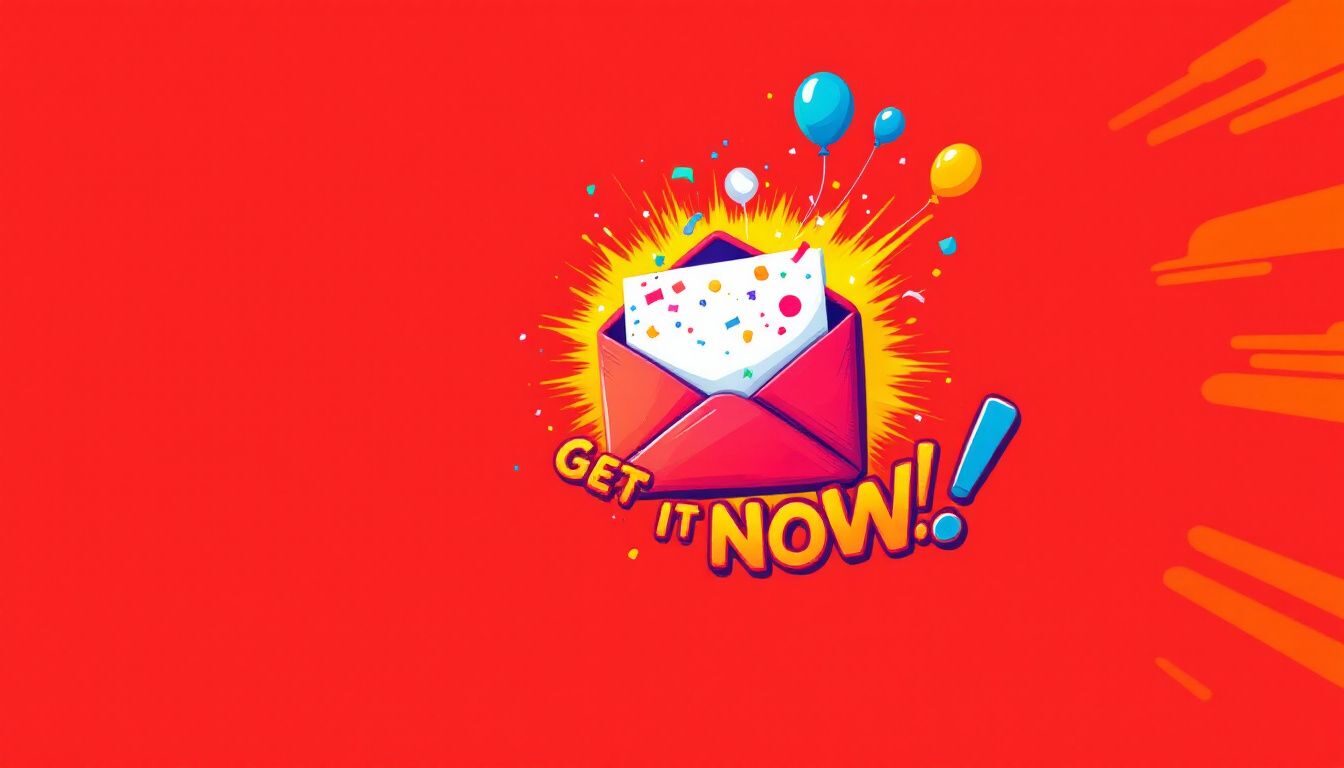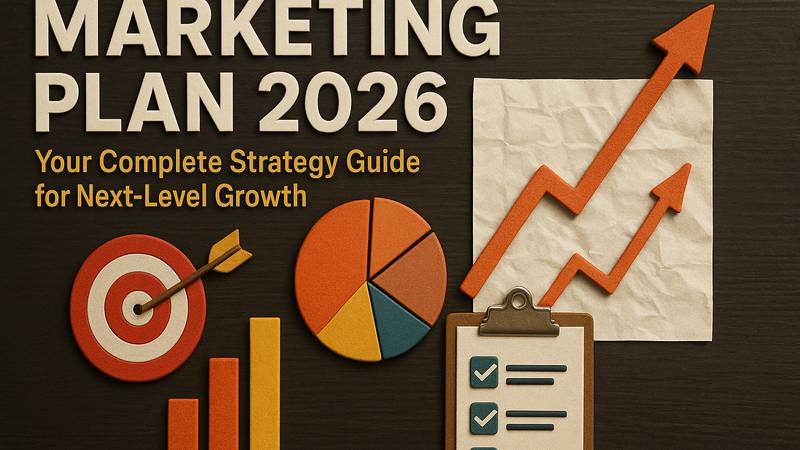
50 Best Email Subject Lines to Increase Open Rates and Drive Engagement
Want better open rates for your emails? Check out these 50 top-performing email subject lines. You’ll learn what makes them effective and get tips on crafting your own compelling subject lines.
Key Takeaways
-
Email subject lines significantly influence open rates, with 47% of recipients deciding to open based on the subject alone.
-
Effective subject lines are short, specific, and provide clear value or urgency, often incorporating personalization to increase engagement.
-
Analyzing subject line performance and employing A/B testing are essential strategies for optimizing email marketing efforts and improving open and click-through rates.
Why Subject Lines Matter in Email Marketing

Email subject lines are pivotal in determining the success or failure of a marketing campaign. As the first impression recipients have of an email, grabbing their attention immediately is essential. Remarkably, 47% of email recipients decide to open an email solely based on the subject line, underscoring the importance of crafting it effectively.
The subject line serves as both a gateway and a filter. If it doesn’t capture the recipient’s attention, the email might never get read, rendering your message ineffective. Effective subject lines grab attention, provide value, and encourage engagement, acting as the hook that draws the reader in and sets the stage for what’s to come.
In today’s crowded inbox, standing out is more challenging than ever. Mastering the art of crafting impactful email subject lines is crucial for any marketer aiming to boost open rates and drive engagement.
Elements of a Great Subject Line
An effective good email subject line communicates the main idea or value succinctly. Short subject lines, ideally around three words, tend to yield higher open rates, making it essential to get straight to the point while keeping it intriguing.
Specificity and urgency can act as compelling calls-to-action. Action verbs create stronger engagement, making your subject line stand out. For example, “Act Now: Limited Time Offer!” conveys immediacy and prompts quick action.
Personalization is powerful. Incorporating the recipient’s name or other personal elements makes subject lines more relatable and attention-grabbing, capturing the recipient’s attention. Piquing curiosity with intriguing phrases can also increase the likelihood of an email being opened. For instance, “Do We Have This in Common?” teases enough to spark interest without giving everything away.
Subject lines indicating clear benefits or value for the reader tend to perform better. Whether highlighting a discount, offering exclusive content, or providing valuable information, your subject line should promise something worthwhile. Experimenting with different types of subject lines helps understand what resonates best with your audience.
Proven Strategies for Crafting Subject Lines
Crafting subject lines is both an art and a science. Tailoring subject lines based on audience segmentation can significantly enhance open rates. Segmenting email lists ensures relevant content for different subscriber groups, making a huge difference in how your emails are received.
Incorporating psychological triggers like urgency, exclusivity, and curiosity can drive engagement. The following subsections will detail these strategies, providing actionable insights and examples to elevate your email marketing game.
Creating Curiosity-Driven Subject Lines
Curiosity-driven subject lines are designed to spark curiosity by asking a question, promising something intriguing, or being unusual. For example, “You won’t believe what we have in store for you!” captures attention and pique curiosity by withholding information.
The curiosity gap, the difference between what people know and what they desire to learn, serves as a strong motivator. Subject lines that hint or give clues about the content can entice readers to open the email. Phrases like “Do we have this in common?” or “Find out what you’re missing!” play on this curiosity gap.
Curiosity-driven subject lines enhance open rates and drive engagement by teasing just enough to make people want more. They invite the reader to uncover the mystery, making them a potent tool in your email marketing arsenal.
Using Urgency to Boost Open Rates
Urgency in subject lines can be a game-changer, leveraging the Fear of Missing Out (FOMO) to increase open rates. When recipients feel time is running out, they are more likely to act immediately. For example, “Only a few hours left!” prompts a quick response.
Subject lines suggesting a deadline can trigger quick actions from recipients. Highlighting limited-time offers with phrases like “Last chance” and “Ending soon” creates urgency, encouraging quicker actions. This strategy is particularly effective in promotional emails where immediate engagement is desired.
Emphasizing exclusivity or limited-time offers, urgency-driven subject lines effectively boost open rates and drive engagement by tapping into the natural human tendency to avoid missing out.
Personalizing Your Subject Lines
Personalization in subject lines goes beyond using the recipient’s name. It involves speaking directly to the recipient, making them feel recognized and valued, significantly enhancing engagement and making your emails stand out in a crowded inbox.
Personalizing subject lines can involve using casual language, sharing something personal, and implying familiarity or friendship. For instance, “Hey John, check this out!” feels more personal and engaging than a generic alternative.
Personalized subject lines improve click-through rates as recipients feel a direct connection. Adding a personal touch makes your emails more relevant and appealing, boosting email marketing effectiveness.
Types of Effective Subject Lines

Various types of subject lines can capture your audience’s attention and drive engagement. The choice depends on your audience, the email content, and the desired action from recipients.
The following subsections explore three different types of effective subject lines: straightforward, humorous and fun, and different subject lines for exclusive offers. Each type has its own unique benefits and applications.
Straightforward Email Subject Lines
Clear and direct cold email subject lines can significantly improve open rates by clearly indicating the email’s purpose. For instance, “Monthly Newsletter” or “Action Required: Update Your Info” leave no room for ambiguity and set the right expectations from the beginning.
Straightforward subject line simple effectively communicate the email’s main point quickly. This approach works well for professional emails and business communications where clarity is paramount.
Humorous and Fun Subject Lines
Humor can be a powerful tool in catchy email subject lines, significantly increasing open rates by grabbing the recipient’s attention. Humorous subject lines make emails stand out in a crowded inbox, prompting curiosity and engagement.
Playful puns and witty phrases like “Open if You Love Fun!” or “This Email Contains 0% Calories!” can elicit a positive response, encouraging people to open the email and continue reading.
Humorous subject lines capture attention and charm recipients, creating a friendly rapport and increasing the likelihood of interaction. They foster a positive relationship with your audience, improving overall engagement metrics with great subject lines.
Exclusive Offer Subject Lines
Exclusive offer subject lines entice readers by promising something special. Sales email subject lines aim to promote a product or service, targeting potential customers to drive sales. Effective retargeting email subject lines can overcome objections, offer incentives, or create urgency.
Subject lines highlighting discounts or time-sensitive promotions can significantly increase click-through rates. For example, “Limited Time: 50% Off!” or “Exclusive Access Just for You” create a sense of exclusivity and urgency, compelling recipients to open the email.
Offering a clear value proposition, these best email subject lines drive engagement and boost open rates, appealing to readers’ desire for special treatment and unique opportunities, making them an effective strategy in email marketing.
Best Practices for Writing Subject Lines

Writing effective subject lines involves following proven best practices. Short subject lines, especially those with fewer than 50 characters, lead to higher open and click-through rates. Brevity ensures your subject line is fully visible on mobile devices and grabs attention quickly.
Credibility is crucial; subject lines must be error-free to build trust with the audience. Effective subject lines should get straight to the point, providing immediate value. Words like “urgent,” “breaking,” and “last chance” enhance urgency and prompt immediate action.
Incorporating humor can enhance engagement and create a memorable experience for the reader. Personalization, such as including the subscriber’s name, boosts open rates by 10-14%. Making emails relevant through segmentation and personalization leads to better engagement.
Keeping subject lines fresh and exciting maintains subscriber interest. Regularly testing and iterating on your subject lines helps discover what works best for your audience and keeps them engaged.
Common Mistakes to Avoid
Several common mistakes should be avoided when creating email subject lines: overly vague content, using all caps, misleading information, excessive length, and lack of personalization. Run-on subject lines can overwhelm recipients, while shorter lines tend to perform better.
One-word subject lines often appear lazy and fail to entice recipients to open the email. Avoiding all caps and excessive punctuation prevents emails from appearing spammy. Including special characters in subject lines can lead to emails being marked as spam.
Using spammy words and overusing emojis can negatively impact deliverability and sender reputation. Generic subject lines lead to low engagement as customers prefer authenticity and personalization. Not optimizing subject lines for mobile devices results in unreadable text. Misleading subject lines damage trust and lead to emails being ignored or marked as spam.
Analyzing Subject Line Performance
Analyzing the performance of your subject lines is crucial for optimizing email marketing efforts. Key metrics for evaluating effectiveness include open rates and click-through rates. In 2024, the average open rate across all industries was 21.5%, while a good open rate typically ranges from 17% to 28%.
The average click-through rate (CTR) for emails was observed to be 2.3% in 2024, with a strong CTR generally falling between 2% and 5%. A good click-to-open rate (CTOR) typically falls between 6% and 17% depending on the industry, with the average CTOR recorded at 10.5% in 2024.
Utilizing A/B testing allows marketers to determine the most effective subject line formats and phrases. Email subject line tester tools can analyze phrases to identify spammy content and provide enhancement suggestions.
AI tools like Mizy evaluate subject lines based on historical data, providing performance ratings that help increase open rates. Consistently analyzing results and iterating on subject line strategies is crucial for optimizing email marketing performance.
Tools to Help You Craft Better Subject Lines
There are various tools available to help you craft better subject lines. OptinMonster offers tools like popups and slide-ins for building a high-quality email list. These tools can help you grow your subscriber base and increase engagement with your emails.
Beehiiv provides a user-friendly interface, advanced analytics, segmentation, and personalization tools for email marketing. This platform can help you tailor your subject lines to different audience segments and improve your email marketing performance.
Engaging preview text can complement the subject line, providing additional context for the email content. This can entice recipients to open the email and read more, boosting your open rates and overall engagement.
1. “Are You Making These [Common Mistakes/Errors]?”
Why it works: Taps into curiosity and fear of missing out (FOMO). Recipients want to ensure they aren’t making these mistakes.
2. “Your [Free Gift/Exclusive Offer] Is Inside!”
Why it works: Clearly highlights a benefit and suggests there’s something valuable waiting inside.
3. “Last Chance: [Offer/Deal] Expires Tonight”
Why it works: Creates urgency and scarcity, prompting immediate action.
4. “A Simple Way to [Solve a Pain Point]”
Why it works: Immediately addresses a problem and offers an easy solution.
5. “We Miss You! Here’s a Special Treat”
Why it works: Appeals to inactive subscribers with a personalized and friendly tone, offering an incentive to re-engage.
6. “How to Achieve [Desired Outcome] Without [Common Obstacle]”
Why it works: Shows you have a workaround to a familiar challenge, which feels like a shortcut.
7. “[Name], Open for Your Personalized Offer”
Why it works: Personalization using the recipient’s name increases open rates by making the email feel uniquely relevant.
8. “Sneak Peek: Here’s What’s Coming Next”
Why it works: Builds anticipation. People love to be “in the know” before everyone else.
9. “You Won’t Believe What Just Happened at [Your Brand]”
Why it works: Curiosity-driven subject lines pique interest, urging subscribers to find out more.
10. “Top 3 Tips for [Achieving a Specific Goal]”
Why it works: Lists and numbered tips are popular because they promise quick, actionable insights.
11. “An Important Update About Your [Account/Subscription]”
Why it works: Implies important news regarding a service or product they’re using, prompting immediate attention.
12. “A Special Thank You – We Appreciate You!”
Why it works: Gratitude emails resonate emotionally, making people more likely to open.
13. “Brand New: [Product Name] Just Launched”
Why it works: Positions the email as timely and relevant. People love to be among the first to know about new things.
14. “Unlock the Secret to [Big Benefit]”
Why it works: The word “secret” sparks curiosity and entices readers to open to learn more.
15. “[X% Off] Sale Ends at Midnight”
Why it works: Combines a discount with a clear deadline to motivate a quick response.
16. “Meet Your New [Solution/Tool/Strategy] for [Pain Point]”
Why it works: Directly connects a problem with a promise of a new solution, driving curiosity.
17. “Exclusive Access: Be the First to [Try/Know/Buy]”
Why it works: Makes recipients feel special; no one likes to miss out on exclusivity.
18. “What 5 Minutes of [Action] Can Do for You”
Why it works: Highlights the small time commitment needed to achieve a potentially significant benefit.
19. “We’re Letting You in on a Little Secret…”
Why it works: Suggests inside information, prompting the reader to learn the “secret.”
20. “Time’s Running Out: [Offer] Ends Today”
Why it works: Reinforces urgency with a time constraint, encouraging immediate action.
21. “Join Us Live for [Webinar/Event]: Don’t Miss Out!”
Why it works: Encourages real-time engagement, emphasizing the special nature of a live event.
22. “Because You Asked: Here’s the Info on [Topic]”
Why it works: Implies you’re responding to a direct request, making the email feel more personal.
23. “Your Quick Checklist for [Goal/Project]”
Why it works: Checklists are easy to digest and promise straightforward, actionable steps.
24. “New Update: [Feature/Product] That Changes Everything”
Why it works: Suggests an important change or innovation that could significantly impact the reader.
25. “X Ways to Save Money on [Topic] This Week”
Why it works: People are always looking for ways to save money, and a quick list feels approachable.
26. “Just for You: Early Access to [Exclusive Content]”
Why it works: Personalized exclusivity makes the reader feel valued and important.
27. “Don’t Open This Email (Just Kidding, Please Do)”
Why it works: Reverses psychology and humor catch attention in a crowded inbox.
28. “Time to Level Up Your [Skill/Strategy]”
Why it works: Appeals to ambition and personal development.
29. “The [Product/Service] You’ve Been Waiting For Is Here”
Why it works: Announces new arrivals or updates, inviting excitement from those anticipating new products.
30. “ICYMI: Your [Offer/Event/Update] Roundup”
Why it works: “In case you missed it” encourages those who might have overlooked an earlier message or update.
31. “[Number] Quick Hacks to Make Your Life Easier”
Why it works: Everyone loves life hacks, and “quick” indicates minimal effort needed.
32. “The Simplest Way to [Desired Outcome]”
Why it works: Promises simplicity and an easy path to success.
33. “We’ve Got Something Special for Our VIPs”
Why it works: Flattering language (“VIPs”) fosters a sense of status and exclusivity.
34. “No Time? No Problem—Try This”
Why it works: Acknowledges the reader’s busy schedule and provides an efficient solution.
35. “[Name], Are You Free on [Date]? Let’s Chat”
Why it works: Personalized and direct. Invites the reader to engage in a conversation on a specific date.
36. “Don’t Miss Our Biggest Sale of the Year”
Why it works: The phrase “biggest sale of the year” stands out and urges immediate opens.
37. “[Product/Service] So Good, It Sells Out Every Time”
Why it works: Implies social proof and high demand, making the offer more appealing.
38. “What [Celebrity/Expert] Says About [Topic]”
Why it works: Leverages social proof from a well-known figure to pique interest.
39. “Start Your Day Right: [Tip/Product Recommendation]”
Why it works: Frames the content as a positive routine or helpful suggestion.
40. “You Asked, We Delivered—[New Feature/Improvement] Is Here”
Why it works: Shows that you listen to customer feedback and act on it, building trust.
41. “Ready for Some Good News?”
Why it works: Positivity stands out in the inbox, tempting readers to open for a mood boost.
42. “Be the First to Know: [Upcoming Release/News]”
Why it works: Appeals to people’s desire to be in-the-know before everyone else.
43. “Say Hello to Your New Favorite [Product/Service]”
Why it works: Creates a sense of excitement about trying something new or improved.
44. “Don’t Get Left Behind—Upgrade Your [Product/Subscription]”
Why it works: Plays on the fear of being outdated or missing out on improvements.
45. “Boring? Never. Spice Up Your [Routine/Strategy]”
Why it works: Challenges the reader’s status quo and suggests a fresh alternative.
46. “Instantly Boost Your [Metric/Results] With This Trick”
Why it works: Promises a quick improvement, which appeals to readers looking for fast solutions.
47. “[X% Off] + Free Shipping—Today Only!”
Why it works: Combines two powerful incentives: a discount and free shipping. Adds urgency with “today only.”
48. “Don’t Let This Opportunity Pass You By”
Why it works: Creates a feeling that something valuable will be lost if the email is ignored.
49. “This Is the Email You’ll Wish You Opened Sooner…”
Why it works: Uses curiosity and FOMO, making the recipient wonder what they might miss out on.
50. “Your [Season/Year] Survival Guide Awaits”
Why it works: Seasonal or situational relevance draws people in with timely, practical help.
Summary
In the world of email marketing, the power of a well-crafted subject line cannot be overstated. From grabbing the recipient’s attention to boosting open rates and driving engagement, the subject line is the key to your email’s success. By understanding the critical elements of a great subject line—such as brevity, urgency, and personalization—you can create compelling messages that resonate with your audience.
Employing proven strategies like creating curiosity, using urgency, and personalizing your subject lines can significantly enhance their effectiveness. Additionally, recognizing the different types of subject lines—straightforward, humorous, and exclusive offers—allows you to tailor your approach based on your campaign’s goals and your audience’s preferences.
By adhering to best practices, avoiding common mistakes, and continuously analyzing performance, you can refine your email subject lines to achieve better results. Utilizing tools like OptinMonster and beehiiv can further aid in crafting subject lines that stand out in a crowded inbox. Remember, the subject line is your first and often only chance to make a connection—make it count.
Frequently Asked Questions
What should a subject line have?
A subject line should be relevant, personal, and descriptive, providing a clear indication of the content within the email to encourage engagement. Tailor it to your audience and consider testing different variations for effectiveness.
How to write good subject lines?
To write effective subject lines, keep them concise and focused, conveying urgency or intrigue in just a few words. This approach ensures your message stands out and engages the reader.
What is an example of a subject line?
A strong subject line example is “5 must-read articles for this week,” which effectively grabs attention and encourages the recipient to open the email.
Why are email subject lines so important in email marketing?
Email subject lines are vital as they create the first impression and largely determine if your email will be opened or disregarded, directly affecting the success of your marketing efforts.
What elements make a great email subject line?
A great email subject line is short, clear, and specific, using action verbs and personalization to convey urgency and value. Aim to capture attention with intriguing phrases that highlight the benefit to the reader.
Want More Email Marketing Tips?
Looking for more in-depth advice on how to grow your list, plan seasonal campaigns, or automate your post-purchase emails? Check out our latest guides and resources to elevate your email marketing game and keep your subscribers excited year-round!
© 2025, ahsan. All rights reserved.



